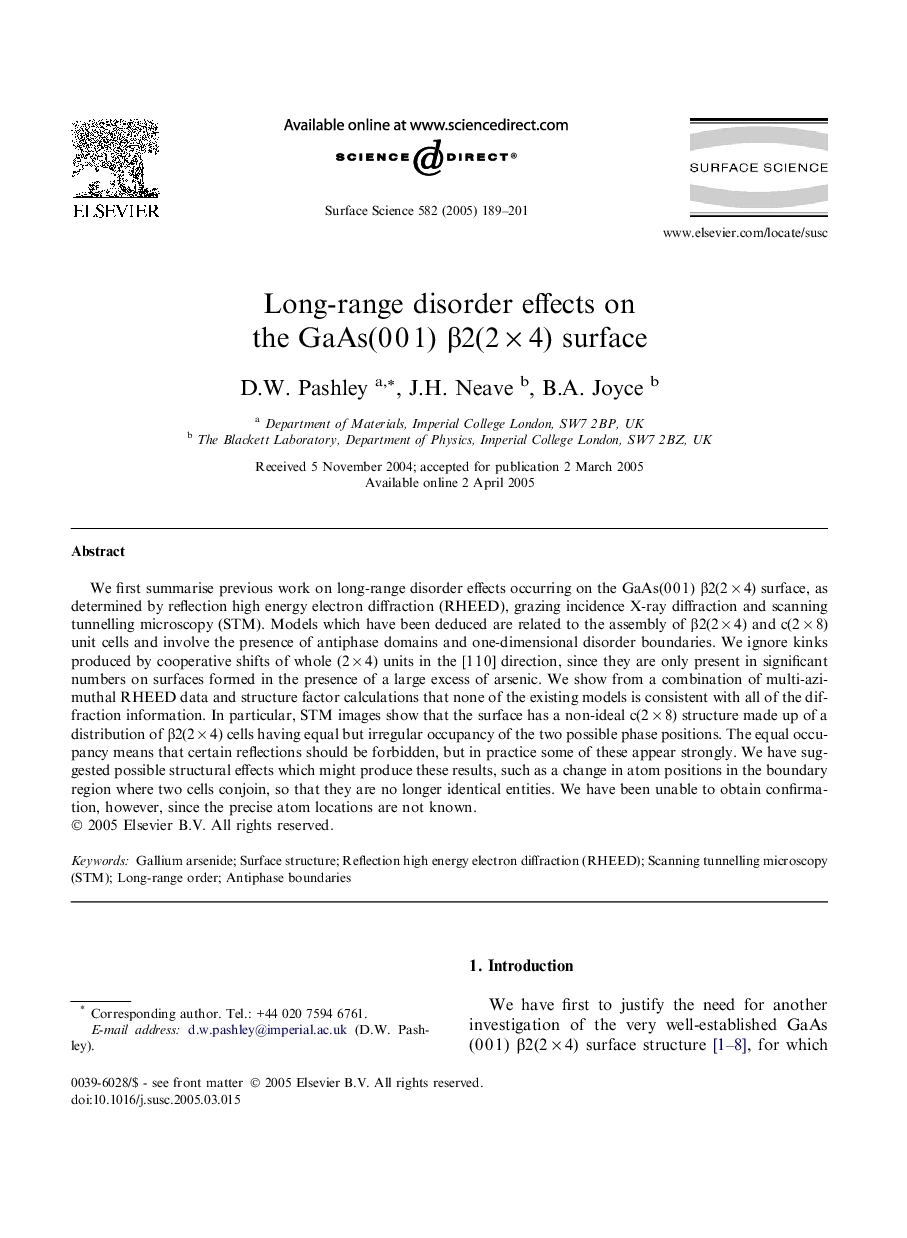| Article ID | Journal | Published Year | Pages | File Type |
|---|---|---|---|---|
| 9594863 | Surface Science | 2005 | 13 Pages |
Abstract
We first summarise previous work on long-range disorder effects occurring on the GaAs(0 0 1) β2(2 Ã 4) surface, as determined by reflection high energy electron diffraction (RHEED), grazing incidence X-ray diffraction and scanning tunnelling microscopy (STM). Models which have been deduced are related to the assembly of β2(2 Ã 4) and c(2 Ã 8) unit cells and involve the presence of antiphase domains and one-dimensional disorder boundaries. We ignore kinks produced by cooperative shifts of whole (2 Ã 4) units in the [1 1 0] direction, since they are only present in significant numbers on surfaces formed in the presence of a large excess of arsenic. We show from a combination of multi-azimuthal RHEED data and structure factor calculations that none of the existing models is consistent with all of the diffraction information. In particular, STM images show that the surface has a non-ideal c(2 Ã 8) structure made up of a distribution of β2(2 Ã 4) cells having equal but irregular occupancy of the two possible phase positions. The equal occupancy means that certain reflections should be forbidden, but in practice some of these appear strongly. We have suggested possible structural effects which might produce these results, such as a change in atom positions in the boundary region where two cells conjoin, so that they are no longer identical entities. We have been unable to obtain confirmation, however, since the precise atom locations are not known.
Keywords
Related Topics
Physical Sciences and Engineering
Chemistry
Physical and Theoretical Chemistry
Authors
D.W. Pashley, J.H. Neave, B.A. Joyce,
